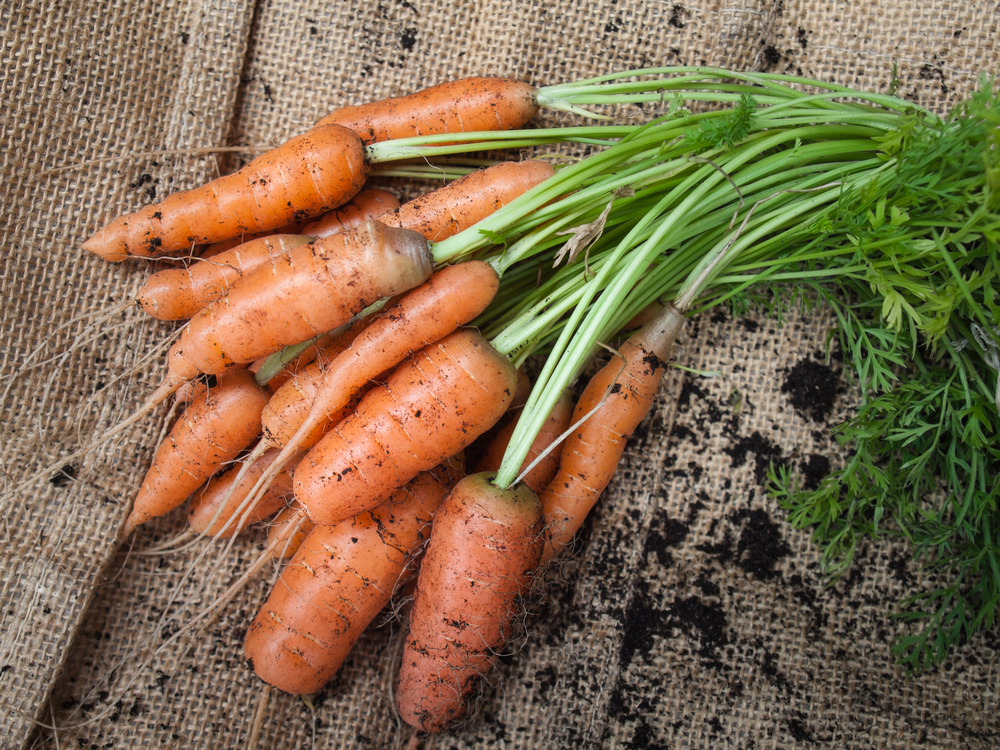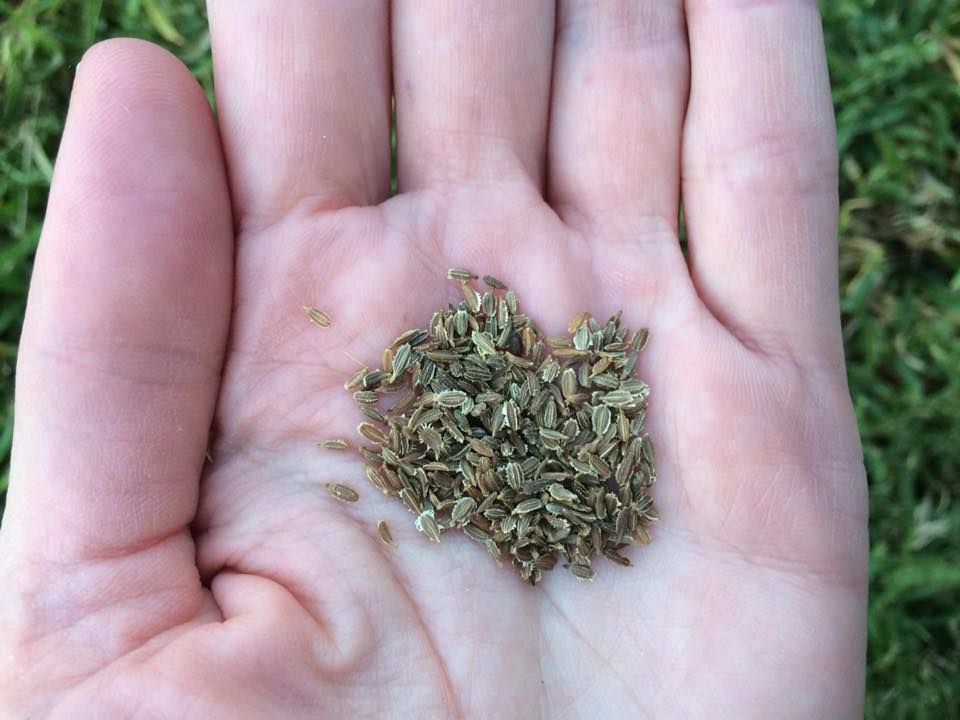Daucus carota
Yellow, white and purple carrots are a novelty for us now, but these were the original colours of early carrots before orange carrots were bred. While highly nutritious, the idea that carrots improve your eye sight comes from World War II propaganda that was used to cover up for new sonar technology that was being developed.
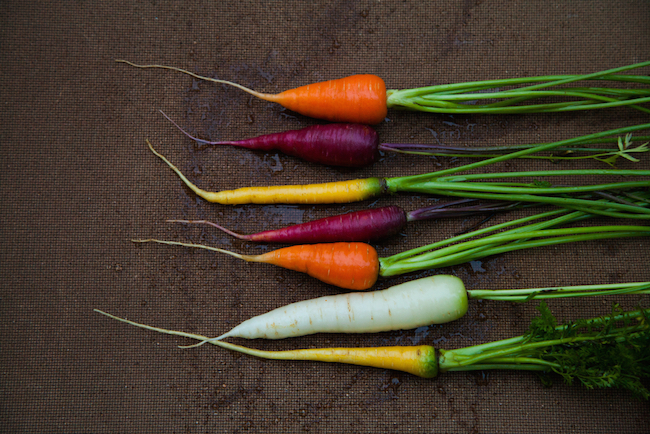
Varieties of carrots
Choose short varieties for heavy soil, and long for lighter soils. Short-rooted and baby carrots are perfect for growing in containers.
- Amsterdam: A variety grown as a baby carrot. Great for containers
- Little Finger: Baby carrot growing 8 to 12 cm. Great for containers
- Paris Market: bulbs, can be grown in pots, small round roots, eat young
- Lunar White: Has a mild favour and white skin and flesh
- Solar yellow: Yellow carrot growing to around 18cm
- Purple Dragon: Purple skin with orange flesh
- Cosmic Purple: Long thin roots growing to 30cm with a purple skin and orange flesh
- Atomic Red: Red skin and flesh growing to 20cm
- Chantenay Red: French heirloom orange-red in colour and short in length
- Royal Chantenay: Short orange carrot, good for heavy soils
- Nantes: Bright orange and easy to grow. Can adapt to a wide range of soils and climates
Seeds or seedlings?
Seeds are best when it comes to carrots. Grow them in rows and thin them out when they are around 10 centimetres in height. If you are planting a big crop or have trouble handing the small seeds you can mix them with dry river sand to help space them out before planting. Use about a 1/3 of a cup of sand for a packet of seeds. Some people also like to mix radish and carrot seeds so they grow together.
When can I plant seeds?
- Warm Areas: All Year (except mid-summer)
- Temperate Areas: September to March
- Cool to Cold Areas: August to February
Remove large rocks from soil
Provide a well-drained soil with a pH of between 6.3 to 7.5. Get rid of any big lumps or rocks to minimise problems with your carrots forking and twisting.
Find a sunny position
Root crops like carrots require a position in full sun.
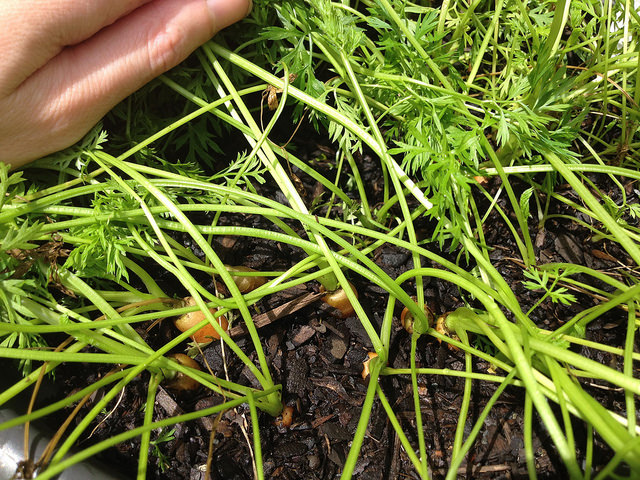
Try growing in a container
Carrots can be grown in a container. Choose baby carrots or short growing varieties such as Paris market.
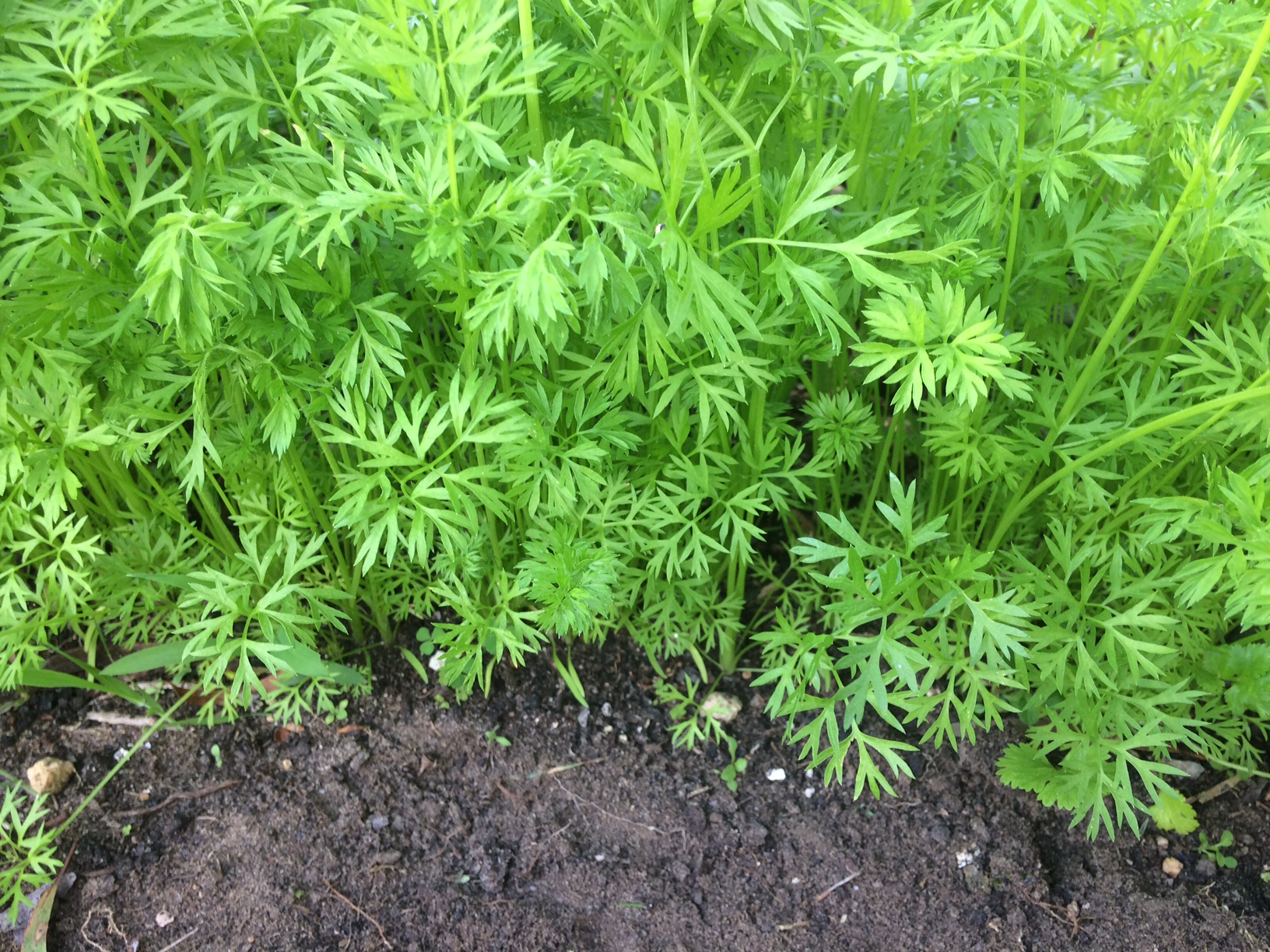
image: carrots ready to be thinned out
Water well
Water consistently to ensure your carrots grow steadily, are tender and juicy and don’t split.
Rotate beds by planting after leafy greens
Rotating garden beds is a great way of minimising disease and optimising nutrient levels. Carrots aren’t very hungry plants and growing them after a leafy green crop is prefect.
Extra fertilising isn’t necessary
There is no real need to add extra fertiliser but if you do, choose an organic low nitrogen one. Your carrots will benefit from some seaweed tonic applied fortnightly.
Companion plant with onions
Onion smell deters carrot fly so try planting these together in alternate rows.
Harvesting your produce
Your carrots will take approximately 8 to 10 weeks to mature, and you can use your fingers to gently dig around the tap root to see how big they are. For the home garden you can simply dig them out as you need them although be aware that if you leave them too long (16 weeks onwards) they will lose their sweetness and become starchy.
To make the most out of your space, you can let your carrots grow closer together then harvest every second carrot as a baby carrot.
Be careful not to snap the roots as use pull them out of the ground. To do this, pull the carrots from the top of the root and twist as you pull them off. If you have heavy soil use a fork to lift the carrots from underneath first. Twist the foliage off and store in the refrigerator for up to ten days until needed.
Why are my carrots forking?
Your soil is probably too heavy. Try improving your soil or growing carrots that are a shorter variety. Twisted carrots can also be caused by too much manure.
Why do my carrots have cracked and split skin?
This is usually caused by inconsistent watering or unfavourable weather.
Where can I buy seeds?
Go to your local nursery or search for seed stores online. Try to buy seeds that have been grown in Australia. You could also join a local savers group or collect your own seeds although be aware that carrots can easily cross pollinate and are a biennial plant so unless you live in the tropics or sub-tropics, plants will take two growing seasons to flower.
Unsure which carrots to plant? Why not plant a rainbow of carrots!

